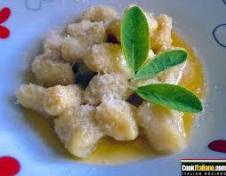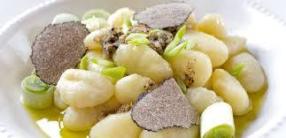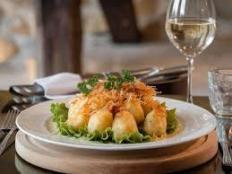A Culinary Journey
Discovering Japan’s Tempura Magic
Discover the rich history and evolution of tempura, a signature dish in Japanese cuisine that has captivated palates since its introduction in the 16th century. Learn about the art of tempura preparation, including the selection of ingredients and cooking techniques that yield its characteristic light and crispy texture. Explore some must-try tempura dishes in Japan, from ebi tempura to seasonal vegetable variations, and uncover the perfect pairings with dipping sauces, sides, and beverages to enhance your culinary experience. Delve into the cultural significance and artistry behind this beloved dish that has transformed from a street food to a refined culinary masterpiece.
A Culinary Journey Through Japan
Discover the art of sashimi, a key element of Japanese cuisine, known for its exquisite presentation and fresh flavors. This blog post explores the history, techniques, and types of sashimi, including tuna, salmon, and mackerel. Learn about the careful preparation methods utilized by skilled chefs, the cultural significance of sashimi in Japan, and where to find the best sashimi when visiting Japan. Embrace the sensory experience of enjoying this delicious delicacy and understand the intricacies involved in its culinary journey.
Indulging in Japan’s Best Donburi
Discover the rich world of Donburi, a traditional staple of Japanese cuisine. Explore its diverse varieties like gyudon, katsudon, and unadon, each showcasing unique flavors and histories. Learn where to find the best Donburi across Japan and get inspired to create your own delicious rice bowls at home with simple recipes and preparation tips. Delve into the culinary heritage of Japan through the comforting and communal experience of Donburi.
Savoring Japan’s Iconic Noodles
Explore the rich history and cultural significance of udon, the thick, chewy noodles that embody Japanese cuisine. Discover various types of udon, regional specialties, and cooking techniques to enhance your culinary journey. Learn how this iconic dish fosters community connections and continues to evolve in modern Japanese dining. From casual eateries to upscale culinary experiences, udon offers a versatile canvas for flavors and personal preferences, making it a beloved staple in Japan. Join us as we dive into the world of udon and its culinary delights.
Introduction to Gnocchi Piemontese
Gnocchi Piemontese is a captivating variant of traditional Italian gnocchi, particularly recognized for its rich history and unique flavor profile. Originating from the Piedmont region in northwestern Italy, gnocchi itself dates back centuries, with a deep-rooted tradition in Italian cuisine. The word 'gnocchi' is derived from the Italian term for 'knots,' reflecting the small, dumpling-like shapes that characteristically define this dish.
At its core, gnocchi Piemontese is primarily made from potatoes, flour, and eggs, but what sets it apart is its use of delightful Piemontese ingredients, such as local cheeses and herbs. Often, this variant incorporates the renowned Toma cheese, which lends a distinctive creaminess and richness to the dish. The potatoes are typically boiled, mashed, and then combined with the other components, creating a smooth and pliable dough. This dough is then rolled out and cut into small pieces, forming the iconic gnocchi shape.
Culturally, gnocchi Piemontese holds a significant place in the culinary lineage of Italy. It is not merely a dish but a cherished tradition, often served during family gatherings and significant festivities. Its preparation requires skill and care, embodying the Italian philosophy of “cucina povera,” which champions using simple ingredients to create extraordinary flavors. The willingness to experiment with various sauces, such as simple butter and sage or hearty ragù, further demonstrates the versatility of this delightful dish.
In essence, gnocchi Piemontese is a representation of the love and creativity inherent in Italian cuisine, drawing from the agricultural wealth of the Piedmont region. As you delve deeper into this culinary journey, you will discover why this dish captivates the hearts of many and stands out as a quintessential element of Italy's gastronomic heritage.
Dipping into Japan
Discover the delightful world of shabu-shabu, the traditional Japanese hot pot dish that embodies culinary artistry and communal dining. Learn about its origins, the best ingredients to use, and the interactive dining experience it offers. This guide will also help you find the best shabu-shabu restaurants and provide insights for recreating this enjoyable meal at home. Whether you're a seasoned cook or a curious foodie, shabu-shabu promises a unique and flavorful culinary adventure.
Planning Your Trip to PiemonteDeposit Pulsa Tri
When contemplating a visit to Piemonte, Italy, particularly for savoring traditional gnocchi piemontese, it is essential to consider the best times for travel. The region experiences a temperate climate, with spring (April to June) and fall (September to October) being particularly favorable. During these seasons, the weather is delightful, and local markets come alive with fresh produce, enhancing your culinary experience.
To enjoy authentic gnocchi, seek out family-run restaurants in towns like Asti, Alessandria, and Novara, where this dish is celebrated. Additionally, make use of local reviews and food blogs to identify highly-rated establishments. Some notable restaurants include Trattoria della Storia in Turin, known for its hearty portions, and Osteria al Nove in Alba, lauded for its regional specialties, including gnocchi. These venues not only offer delicious food but also a glimpse into the local culture.
Participating in culinary festivals is another way to immerse yourself in the flavors of Piemonte. Events such as the Fiera Nazionale del Tartufo Bianco d'Alba held in October feature not only truffles but local dishes, with gnocchi often taking the spotlight. Engaging in cooking classes can also enhance your experience by providing hands-on opportunities to prepare and taste these delightful potato dumplings.
Transportation around Piemonte is accessible, with trains and buses connecting major cities and towns. Renting a car may provide more freedom to explore rural areas and hidden gems where gnocchi is prepared in unique ways. As for accommodations, consider staying in agriturismos that often serve home-cooked meals, showcasing the authenticity of the region’s cuisine.
Finally, while visiting, take time to explore other attractions such as the beautiful vineyards of Langhe and the historic architecture of Turin, enriching your travel with both cultural and culinary experiences. With careful planning, your journey to Piemonte can become a memorable expedition centered around the delightful gnocchi piemontese.
Biting into Japan: A Delicious Trip for Chicken Katsu Lovers
Discover the rich origins and culinary journey of Chicken Katsu, a beloved dish in Japanese cuisine. Learn about its history, top cities in Japan to experience authentic Chicken Katsu, tips for ordering, and how to recreate this delicious dish at home. Uncover the unique blend of Japanese and Western influences that shaped Chicken Katsu and explore essential tips for cooking and enjoying this savory treat.










